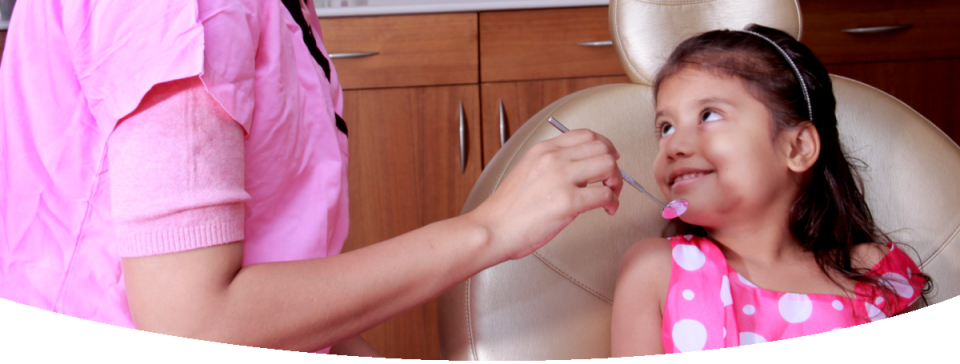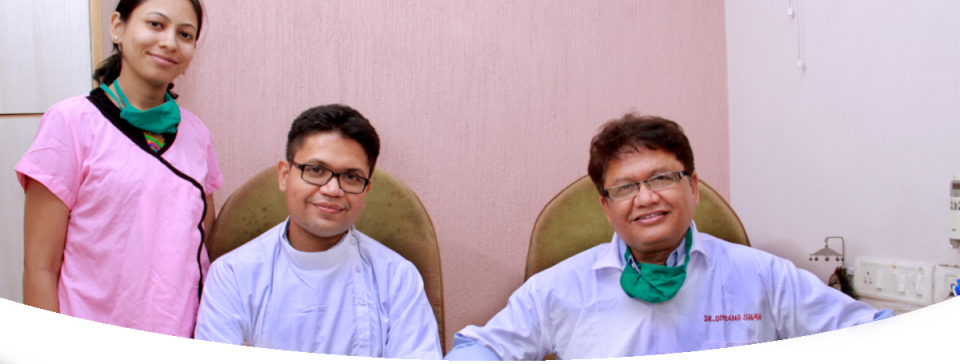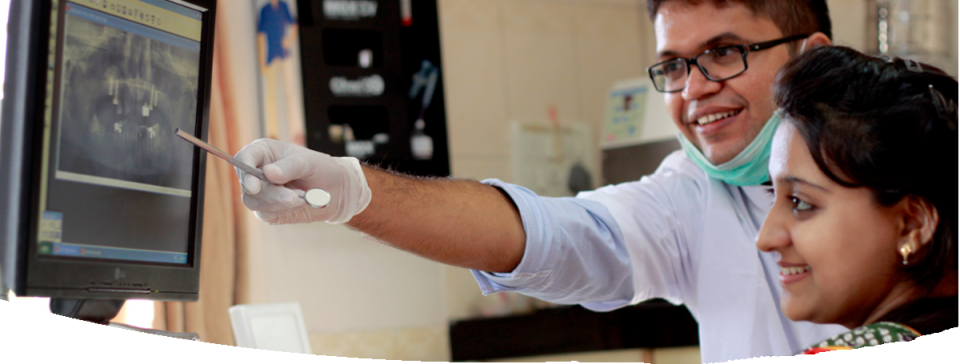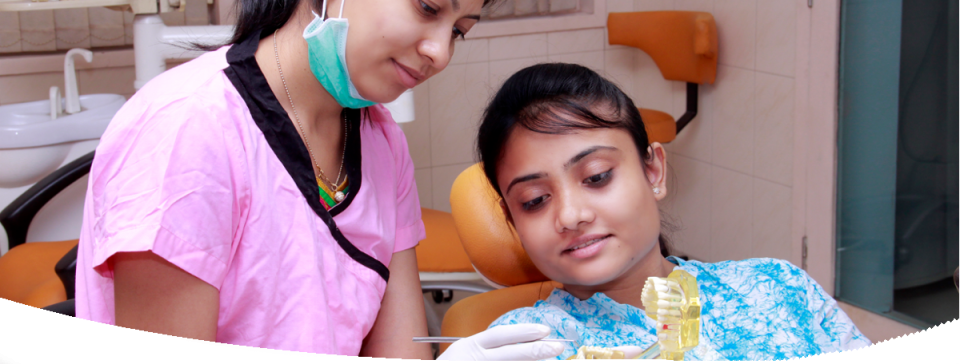Bone grafting is a surgical procedure that replaces bone that is supporting the teeth. In this treatment, a material is placed in the missing area of bone.
Where do I need bone grafting?
Bone grafting can be done in many dental procedures, but principally bone grafts are generally used around the teeth during gum surgeries or for implant procedures.
Bone Grafting Around Teeth in Gum Surgery
Due to gum disease, bone loss can occur. So when condition is favorable, bone grafts can be placed in those bone defects around the teeth.

Bone Grafting Around Implants
Implants are placed inside the jawbone so naturally if bone is not sufficient and it requires to be grafted first. If you are considering an implant but dental x-rays and/or CAT scan show that you have a thin jawbone as a result of bone loss, then a graft will be necessary.
Your jaw may show an advanced bone loss as a result of the aging process, prolonged denture wear, missing teeth, periodontal gum disease or as a result of an accident.
If bone defect is mild, then grafting can be done along with implant placement. However, if severe bone loss has occurred, then the bone grafting precedes the implant placement. Generally 3-6 months are required before the implant is placed.

There are other techniques available, which can help with bone loss such as a sinus lift or elevation, ridge expansion and distraction osteogenesis.
Sinus Bone Grafting for Implant
A sinus grafting is a surgery that adds bone to your upper jaw in the area of your molars and premolars. It’s sometimes called a sinus augmentation. The bone is added between your jaw and the maxillary sinuses, which are on either side of your nose. To make room for the bone, the sinus membrane has to be moved upward, or “lifted.” A sinus lift usually is done by a specialist. Dr. Dipen Shah, who is a certified sinus surgeon, performs this procedure with great precision & success. We have the modern motorized sinus kits to avoid unpleasant tapping with mallet, which is generally performed to lift the sinus membrane.

A sinus grafting is done when there is not enough bone height in the upper jaw or the sinuses are too close to the jaw for the dental implants to be placed.
Sinus lifts have become common during the last 15 years as more people get dental implants to replace missing teeth.
Bone Graft After Extraction
If implant treatment is likely to follow your tooth extraction, then it is advisable to graft the area after tooth is extracted. This procedure, known as socket preservation, is gaining a wide popularity.
Generally after extraction, jaw bone shrinks and hence at the time of implant placement, enough bone may not be available. If graft is placed at the area after extraction, it maintains the bone volume and hence at the time of implant placement, additional need of grafting is avoided. However, graft is better avoided if active infection or pus is present.



Types of bone grafts
There are four types of bone grafts:
- 1. Autogenous or Autografts
- 2. Allografts
- 3. Xenografts
- 4. Alloplastic
Autogenous
This is the most popular and successful of all the grafting techniques and is often referred to as the ‘gold standard’ in bone grafting. Basically patients’ own bone is used as a bone graft. Bone is removed or harvested from suitable area of patients’ body and places it into the defect.
This is the most successful of all four techniques as the grafted bone aids with the regeneration of the jawbone.
Allografts
This is similar to an Autogenous graft in which, it uses a natural bone, although this is taken from a human donor rather than a part of your own body. There are special ‘bone banks’ for this purpose where people have donated bone samples – which are very similar to blood banks.
If you are not keen to have an Autogenous bone graft, then this is an option. The donor bone is taken from a source of human cadavers via a special ‘bone bank’ and is rigorously checked and sterilized before grafting takes place.
Xenografts
This is a third option: The difference between this and the other two procedures is that the donated bone is harvested from animals rather than a human donor.
Bovine (cow) is the preferred form of animal bone for this graft. You may feel uncomfortable about this and worry about the safety aspects but this undergoes a system of rigorous testing beforehand. This is to ensure that it is sterile and compatible with your anatomy and bone composition.
Alloplastic
This graft is a synthetic version, made of calcium phosphate which looks almost identical to natural bone.
What are the risk factors for bone grafting?
Bone grafting is a very successful procedure although you do need to know that like all procedures there is a tiny risk of rejection. We cannot be 100% certain as to why this happens although we can highlight contributing factors such as smoking and certain medical conditions. These can predispose the patient to this risk.
Bone graft failure can happen as a result of an infection or as a result of the grafted bone becoming loose and refusing to stabilize in the jaw. If you experience bone graft failure, then you will have to undergo a removal of the rejected graft followed by a period of healing before a second graft can take place.
Precautions After Bone Grafting
Your bone graft is made up of many particles. You may find some small granules in your mouth for the first several days. Do not be alarmed by these. It’s normal to have some of them come out of the graft site and into your mouth. There are some things you could do to minimize the amount of particles that become dislodged:
- 1. Do not disturb or touch the wound
- 2. Avoid rinsing or spitting for 2 days to allow blood clot and graft material stabilization
- 3. Do not apply pressure with your tongue or fingers to the grafted area, as the material is movable during the initial healing
- 4. Do not lift or pull on the lip to look at the sutures. This can actually cause damage to the wound site and tear the sutures
- 5. Do not smoke
- 6. Following the second day, gentle rinsing is allowed but not too vigorously as you can again disturb some of the bone graft granules. If a partial denture or a flipper was placed in your mouth, you may have to see your restorative dentist to have it adjusted and learn how to remove and replace it appropriately








